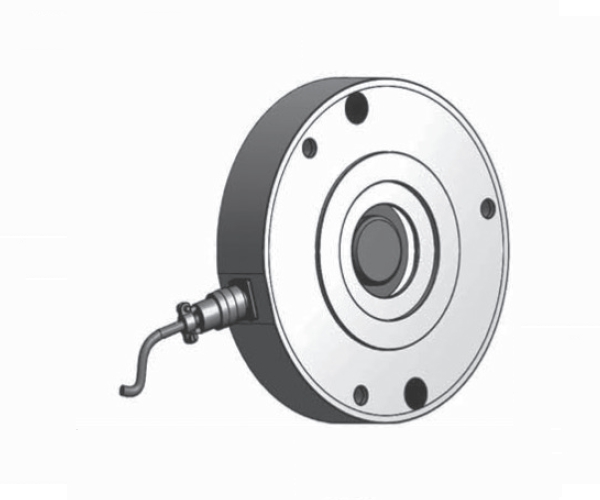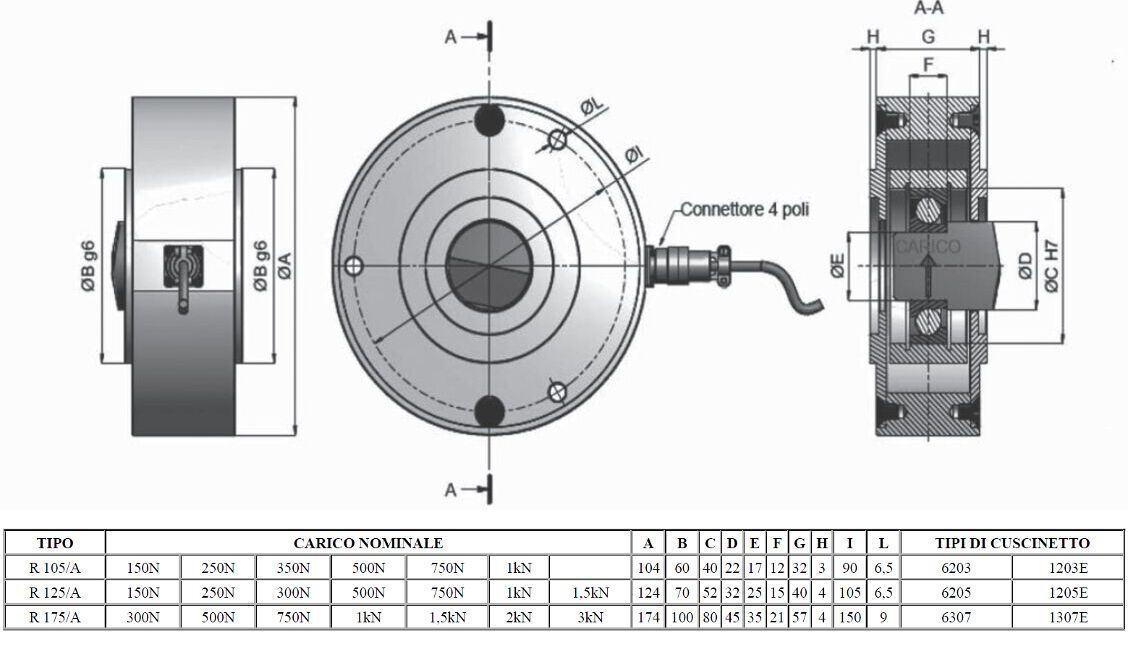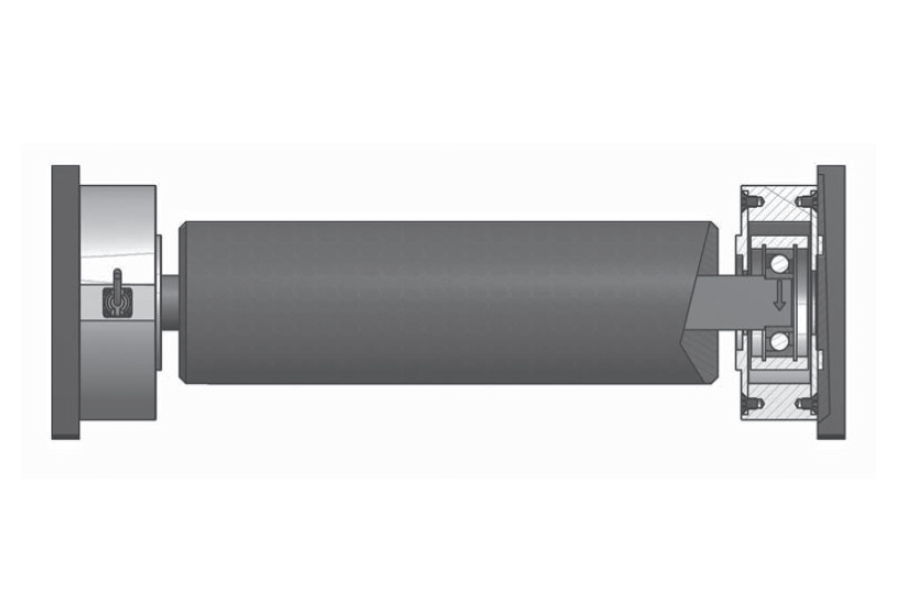ROLL LOAD CELL
Features: Through hole for the roller endpin. Easy to install for new and existing machines, low thickness. Protection against overloads.
Applications: measure of tension tapes, tessil, paper, metal laminated, rubber, nylon, flexographic, printing presses, photografhic development, etc.
![]() Click to enlarge image
Click to enlarge image



| Material | Stainless steel |
| Nominal load | 100, 150, 250, 350, 500, 750, 1000, 1500, 2000, 3000 N |
| Limit load | 300 % F.S. |
| Breaking load | 500 % F.S. |
| Nominal load deflection | 0,10 mm |
| Supply voltage | Maximum 18 V dc |
| Sensitivity | 1 mV/V |
| Output tollerance | 0,1 % F.S. |
| Zero tollerance | 1 % F.S. |
| Linearity | 0,1 % F.S. |
| Hysteresis | 0,03 % F.S. |
| Reapeatability | 0,2 % F.S. |
| Input resistance | 350-360 ohm |
| Output resistance | 350-353 ohm |
| Insulation resistance | >= 2000 Mohm |
| Creep (30 Minutes) | 0,03 % F.S. |
| Thermal compensation | -10 / +40°C (14 / +104°F) |
| Operating temperature | -20 / +70°C (-4 / +158°F) |
| Temperature deviation zero | 0,003 % F.S. / °C |
| Temperature deviation full scale | 0,002 % F.S. / °C |
| Protection class | IP 65 |
| Connection | Panel male connector MQ12M5F1B030 |
| Standard cable length | Loose female connector 8A5000315, connection cable 4 x 0,25 (length to be defined) |
| Type | CONNECTOR M12 RSFM5 MALE |
| Length | 5 - 10 m (body lead cell not connected shield) |
| Pin 4 | - IN |
| Pin 2 | - OUT |
| Pin 3 | + IN |
| Pin 1 | + OUT |
General precautions to be followed in the installation and assembly of load cells: